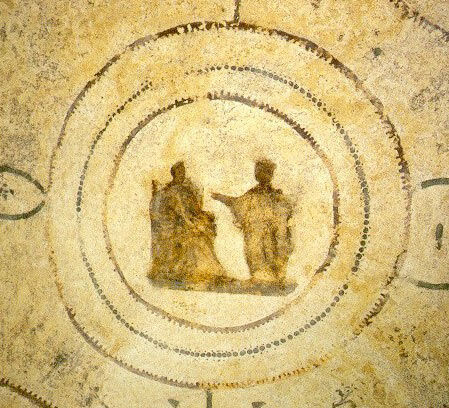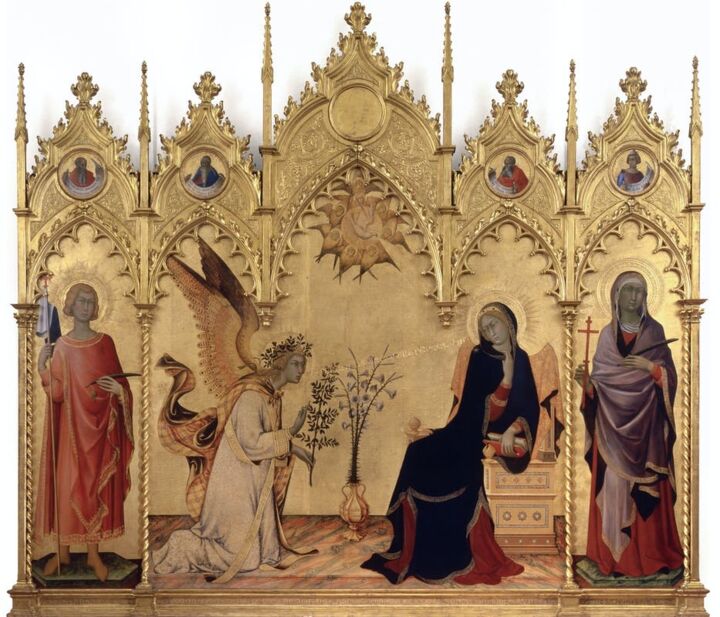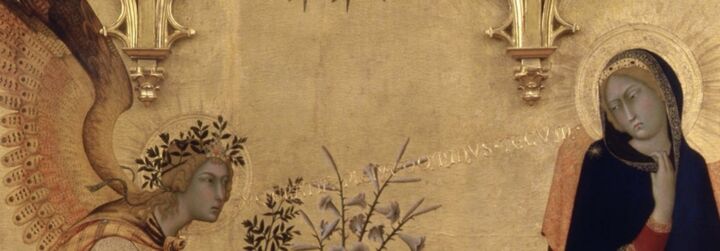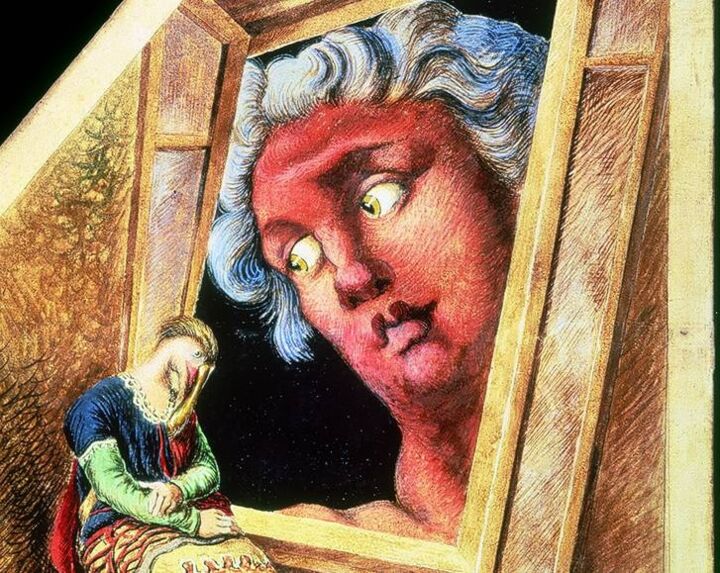What pictorial theme, if not the Annunciation, can bring art lovers closer to the spirit of Christmas?
The Annunciation of Mary, or the announcement of the virgin conception of Mary and the virgin birth of Jesus, made to the Virgin by the Archangel Gabriel, is one of the subjects most frequently represented in the history of art. This theme has been approached by artists since Antiquity, so much so that the oldest known representation of the subject dates back to the first half of the 3rd century: a fresco painted on the vault of a cubicle in the catacomb of Priscilla in Rome.
 Roman fresco, the first half of the 3rd century, in the Catacomb of Priscilla, Rome
Roman fresco, the first half of the 3rd century, in the Catacomb of Priscilla, Rome
The Annunciation by Simone Martini, a 14th-century Italian masterpiece
Therefore, when Simone Martini painted her famous Annunciation, dating from 1333 and preserved at the Uffizi Museum in Florence, the subject had already been widely exploited and experienced in the positions and poses of the protagonist characters in the scene.
The Annunciation by Simone Martini, signed and dated by the artist, was painted to adorn the altar of Saint Augustine, which is dedicated to the Virgin of the Assumption in the transept of Siena Cathedral. In the work, a rich gilded frame, punctuated by five-pointed arches, hosts, in the central part, the figures of the Virgin and the announcing Archangel Gabriel and, at each end, the images of the saints Ansanus and Maximus.
 Simone Martini, Annunciation and Saints Ansanus and Maximus , 1333. Tempera on panel - gold background, 184x210 cm. Florence, Uffizi Gallery.
Simone Martini, Annunciation and Saints Ansanus and Maximus , 1333. Tempera on panel - gold background, 184x210 cm. Florence, Uffizi Gallery.
 Detail of the altarpiece by Simone Martini.
Detail of the altarpiece by Simone Martini.
"AVE GRATIA PLENA DOMINUS TECUM" (Hail, full of grace, the Lord is with you).
Archangel Gabriel, kneeling like a knight, appears before the Virgin, offers her an olive branch (symbol of universal peace that the unborn child will spread on earth) and announces the birth of Jesus with the words inscribed in relief on the gold background: "AVE GRATIA PLENA DOMINUS TECUM" (Hail, full of grace, the Lord is with you). In addition, the angel, who wears an elegant damask dress and a plaid cape, stands out from other artworks depicting the same subject. Indeed, the dynamism with which the cape and the wings, still unfurled, have been represented gives the impression that Gabriel has landed in front of Marie all at once.
The Virgin appears captured with the expression of someone who is clearly disturbed by what is before her, so that she withdraws, clutching her cloak. This cloak, blue in color, contrasts strongly with the golden background. This choice was made consciously by the artist, since Mary, unlike the angel, who is a celestial creature, does not emanate light, but is only enveloped by it.
Above, in the space between the two figures, hovers a dove (symbol of the Holy Spirit) surrounded by seraphim, while below, on the ground, is a vase of lilies, alluding to virginal purity from Marie.
The golden background chosen by Martini for this panel eliminates any sense of depth and spatial definition, making the scene timeless. However, the few elements represented (such as the marble floor, the richly carved high chair, the precious fabrics, the book that Mary read before the heavenly apparition) can be linked to the houses of the better-off classes of the italian 14th century.
The result is a very calibrated composition, based on the aristocratic and unreal elegance of the gestures, the preciousness of the colors, the refined use of the curved and sinuous line, all characteristics which distinguish the work of the Italian Master. Alberto Savinio, Annunciation , 1932, oil on canvas, 99x75 cm. Milan, Boschi di Stefano House-Museum.
Alberto Savinio, Annunciation , 1932, oil on canvas, 99x75 cm. Milan, Boschi di Stefano House-Museum.
The profanation of the Annunciation
Over the centuries, Martini's representation of the Annunciation has been widely studied and modified by artists, to the point of being even desecrated! An example of this is the Annunciation painted by Alberto Savinio, brother of the famous Giorgio de Chirico. Indeed, in the artist's oil painting, the Virgin is transformed into a woman with the head of a pelican, while the angel Gabriel becomes a giant in the appearance of a Greek statue.
Going into the details of the composition, the work represents an interior in which a welcoming, submissive, and dozing Virgin receives a visit from Gabriel, represented only by the compassion emanating from her enormous face. Unlike Martini, Savinio deprives the work of objects and characters in addition to the main ones, because his intention is to exclusively study the almost intimate relationship that is created between the Virgin and the Archangel.
Regarding the setting of the event, the traditional gold color is recalled by the ocher with which Savinio painted the walls, which are however torned by an impenetrable black sky, the purpose of which is to convey a strong sense of emptiness. In doing so, the artist wanted to re-propose the drama of man, eternally incapable of declining the grammar of faith. Finally, it is important to underline that all of Savinio's innovations were made thanks to the desacralized spirit of the artist, who saw himself as an independent creative force, able to place himself beyond and above Italian artistic tradition.
In conclusion, it is evident how Savinio's composition, charged with different symbolic meanings compared to Martini's and simplified in the number of objects and characters, alludes to the same sacred event, even if it is tinged with the color of the eternal mystery that envelops religion and human existence.


 Olimpia Gaia Martinelli
Olimpia Gaia Martinelli